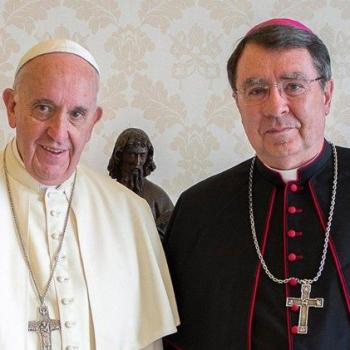Here’s a different take on Pope Francis, from a business perspective, via a retired university professor and dean:
Leaving aside for the moment judgments about faith and doctrine that are beyond the scope of the financial pages, let’s just look at how successful Francis has been in his first year as CEO of one of the world’s largest and most influential multinationals. He may be the first Pontiff to merit a Harvard Business School case study in 21st Century executive leadership.
Consider the situation he inherited when he took office. To speak in modern social media terms, the Church’s “user base” of 1.5 billion was losing interest, and literally shrinking in terms of “return visits” virtually everywhere except the new Pope’s South American homeland. Even there, the Church was losing pace to more passionate and exciting rivals including Pentecostals and similar marketing styles.
Despite inherited traditions and “engagement cradle to grave” customer services offerings (including schools, marriage, healthcare and multiple social safety-net programs), the Church’s customer base has been literally losing faith in the its continued relevance to their lives and its understanding of their needs. Moreover, a global scandal involving sexual abuse of Church children, implicating both its most senior regional managers and its all-male sales force, had already created a wave of adverse publicity and expensive litigation that reached all the way to headquarters in Rome…
…The judgment and customer-sensitivity of the new Pope’s predecessor had been actively called into question, and he chose to take early retirement. But he still retained supporters among the powerful Church faction that strongly identified with his conservative strategy and management approach aimed at foregoing market share growth for a smaller, more committed customer base. The Board of Directors was badly split into factions based on regional, cultural and ideological factors, and was able to forge a compromise choice of Cardinal Bergoglio as the new Pontiff as a result of his runner-up status the last time around (much like the Republican Party in the US, which the Church had come to resemble). They thought they knew Bergoglio, but as one factional leader on the Board remarked several months later, they got more than they bargained for.
Francis I was thus confronted with a Church facing loss of customer engagement, slowing and in some markets negative market share growth, the need for a new CFO and a banking clean-up, fractured public relations, and huge litigation costs — not to mention a demoralized (priesthood) sales force, some weak and ideologically hidebound regional managers (bishops) set in their ways, and a particular erosion of the Church’s core support among women who felt relegated to “second-class customer” status. This was especially true among the many auxiliary female sales forces that had been created over the centuries who had chosen celibacy to serve the Church but were not given equal status with the salesmen, who had made the same choice but gotten the Church into much more trouble.












